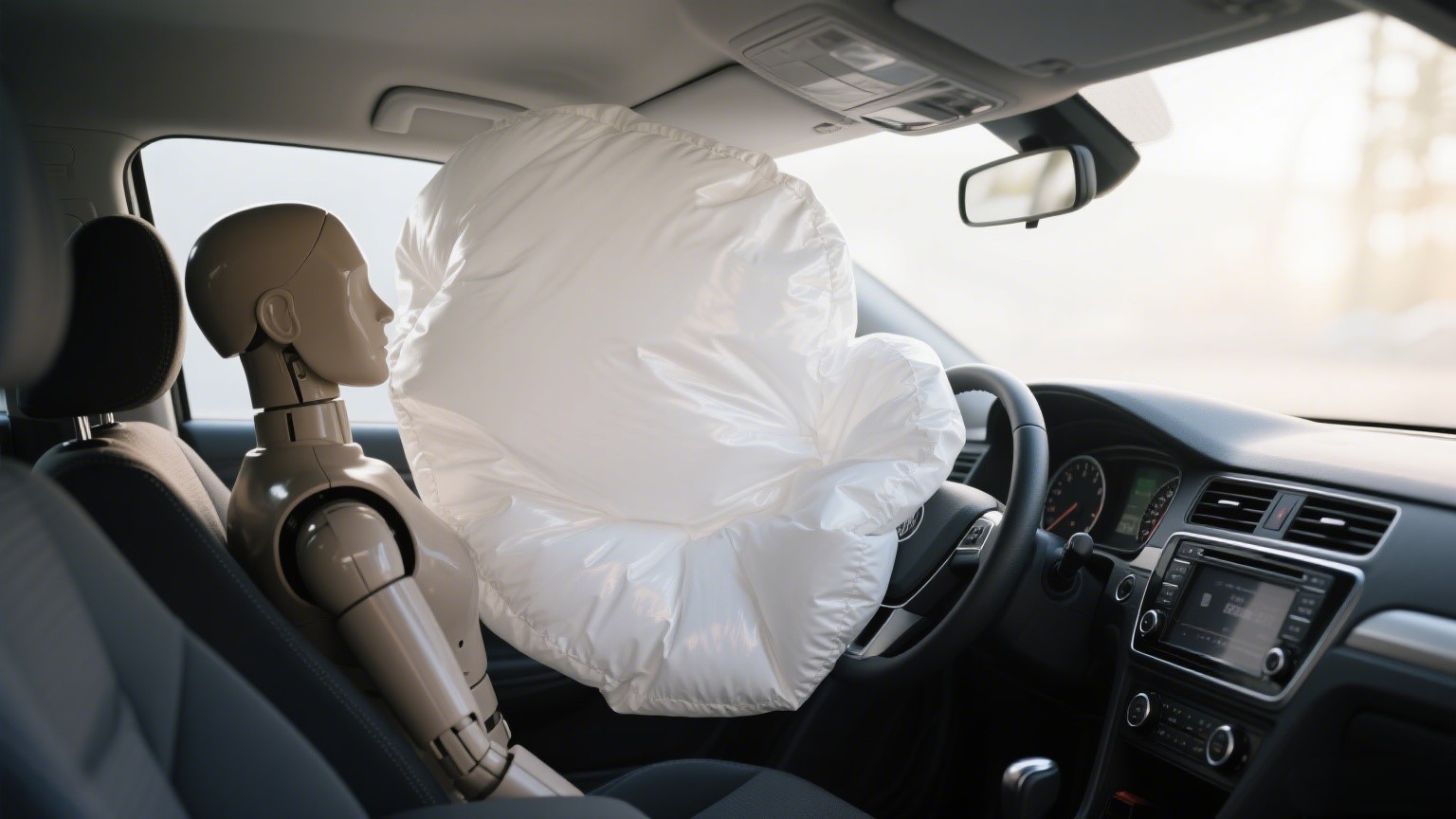Ever wonder what happens in a split second during a car crash to keep you safe? Meet the airbag, your vehicle's invisible guardian. This article breaks down its amazing science in simple terms.

The Main Types of Airbags
Cars today have a network of airbags, not just one:
- Frontal Airbags: The most common type, located in the steering wheel and dashboard, protecting the driver and front passenger.
- Side Airbags: Usually in the seat or door, they protect your torso in a side-impact collision.
- Side Curtain Airbags: These drop down from the roof lining to protect heads in both front and rear seats during a side crash or rollover.
The Trigger Mechanism: A Lightning-Fast Reaction
Airbags don't just "pop." They deploy through a precisely engineered chain reaction:
- The Crash: A sudden, severe deceleration (like in a head-on collision) occurs.
- The Sensors: Electronic sensors (accelerometers) detect this rapid change in speed.
- The Signal: The sensors send an electrical signal to the airbag's inflator unit.
- The Ignition: The signal ignites a chemical propellant (usually sodium azide) inside the inflator.
- The Inflation: This controlled explosion produces a large amount of harmless nitrogen gas, which inflates the nylon bag in less than 1/20th of a second—faster than you can blink!
- The Deflation: The bag instantly begins to deflate through tiny holes in its fabric, cushioning your body and slowing you down gently.
Crucial Safety Notes
- NO Children in Front: Never place a rear-facing child seat in the front passenger seat. The force of a deploying airbag can cause serious injury or death to a child.
- Proper Seating: Sit upright with your chest at least 10 inches (25 cm) from the steering wheel or dashboard. Do not put your feet on the dashboard.
- Post-Crash Replacement: After an airbag deploys, the entire module must be replaced by a qualified professional to be safe again.
The Unsung Hero: Your Seatbelt
This is the most critical point: Airbags are a Supplemental Restraint System (SRS). This means they are designed to work WITH your seatbelt, NOT instead of it.
- Positioning: A seatbelt ensures you are in the correct position for the airbag to be most effective. Without it, you could slide forward or be thrown "out of position," causing you to hit the deploying airbag incorrectly, which can lead to injury.
- Slowing You Down: The seatbelt slows your body's forward movement more gradually, allowing the airbag to provide the final, soft cushion. An airbag alone cannot stop the full force of your body in a high-speed crash.
In short, your seatbelt and airbags are a perfect safety team. Always buckle up—it's the single most effective way to stay safe and ensure all your other safety features can do their job.




